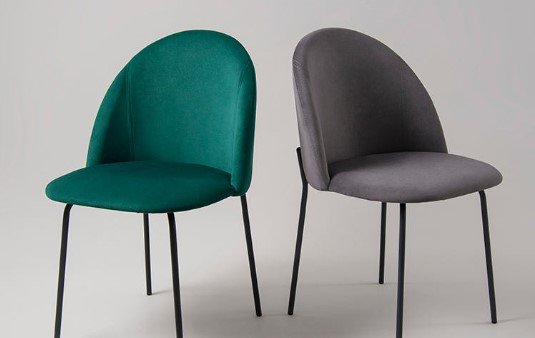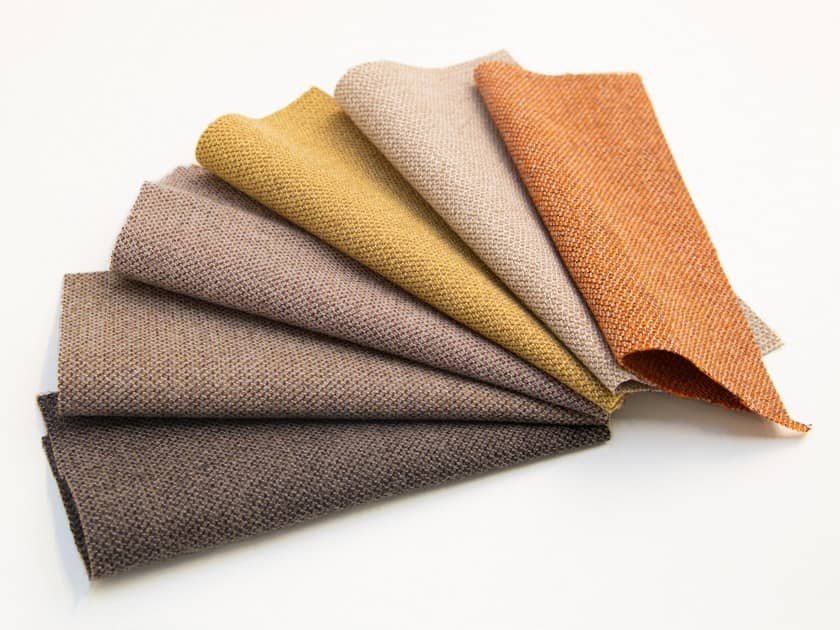Upholstery Material for chair and furniture fabrics
Many of us prefer to sit and relax on upholstered chairs, whether in living rooms or in the kitchen or dining room. But in order for the furniture to last longer, not to lose its original shade, not to rub or fade, you need to choose the right upholstery material for chair. In this article we will discuss about the types of coatings, their classification and features, as well as selection criteria.

Requirements for furniture fabrics
Upholstery fabric products manufactured in all countries are assessed according to ISO ( International Organization for Standardization ) or the Customs Union. You can also find products made according to specifications, but they do not always meet the stated standards.
Upholstery fabric used for upholstery of chairs for the home or public places must meet a number of requirements:
- Abrasion resistance.
- Maintain shade for a long time.
- Have good fire resistance.
- Not to be covered with pellets and not to delaminate into individual fibers with short-term use.
- Do not be afraid of exposure to chemicals and cleaning agents, which will greatly simplify care.
- Have a width of at least 142 cm, since the smaller size is difficult to use in any way.
- Have a good density, as thin materials are less resistant to wear.
These characteristics are verified by the manufacturer upon receipt of a certificate or marketing authorization. Therefore, most of the materials sold in one way or another can be used for furniture finishing, and meet the stated requirements.
Types of materials for upholstery of chairs
Composition : Upholstery Material for chair
- Natural. They are made from cotton, linen, wool, less often jute. The most environmentally friendly, perfectly breathable. But under the influence of moisture, they easily sit down, so it is not recommended to take them to the kitchen or dining room. Or, before cutting, they are thoroughly soaked so that the canvas sits.
- Synthetic. These include fabrics made of nylon, acrylic, polyester and nylon. They are resistant to abrasion, do not shrink after washing or wet cleaning. Poorly breathable, are unpleasant to the touch.
- Artificial. They are recycled natural fibres. The most popular representative is viscose and all its analogues. Soft, non-allergenic, easy to maintain, does not shrink and is inexpensive.
According to the method of production of the front layer:
- Non-woven. Most often imitate suede, leather. They also include flock and similar upholstery. In their case, the pile is glued to the substrate. Wear resistance depends on the adhesive composition and the selected lining.
- Woven. These are materials where the interweaving of threads is noticeable. Namely – tapestry, jacquard, chenille and some other options. The fleecy part on them is absent or woven into the substrate.
By production technology:
Faux leather
It is a single, non-woven fabric, which is coated with polymeric impregnations that are safe for people. It is distinguished by a variety of textures and shades. It does not rub for a long time, but it can be scratched.
Faux suede
It is a small pile glued on a cotton or polyester backing. Pleasant to the touch, presented in a variety of shades and textures, but needs proper care.
Velveteen
Woven fabric created by intricate weaving of threads. It stands out for its original texture and patterns, durability and environmental friendliness. It does not tolerate high humidity and frequent washing.
Microfiber
Fabric made from very small fibers joined together. Abrasion resistant so will last for many years. In some cases, it is used as a replacement for suede.
Rogozhka
A woven fabric made from threads of cotton, polyester or acrylic. Durable, looks good, easy to care for and clean from any dirt. Many shades.
Velours
A complex weave of threads and pile, which can then be cut to different heights. Pleasant to the touch, soft, comfortable for the skin. Cheap or sub-standard material wears out quickly. Needs careful handling.
Tapestry
A woven material that stands out with a variety of textures, patterns and shades. Strong, dense, durable, but quite expensive. Used for upholstery of expensive chairs.
Jacquard
Reminiscent of tapestry fabrics, has similar properties. Slightly different in softness and texture.
Flock
Material with villi glued to the substrate. Pleasant to the skin, resistant to abrasion, but poorly breathable, so sitting on it may not be as comfortable.
Chenille
Semi-natural fabrics with the addition of a silky thread to the weave. Durable finish, soft to the touch, virtually non-shrinking and easy to clean. It is relatively expensive.
Other fabrics can also be used for upholstery of chairs, but the types listed above are used more often than others, since they are less susceptible to various influences and are distinguished by a variety of shades and textures. At the same time, they are relatively accessible, which also attracts attention to them. Genuine leather, suede or cotton will cost an order of magnitude more expensive, and they need complex maintenance. Without care, these materials will not last long.

Additional processing methods
To protect furniture fabrics from various influences, they are impregnated with compositions that are safe for people. Among them:
- Water repellent finishes. Reduces the amount of moisture absorbed by the upholstery.
- Anti-allergic compounds. Prevent the reproduction of parasites and microbes on the surface. However, they do not cause allergies and are completely safe for people.
- Dirt repellant. After their application, contamination, some types of oils and other substances are worse absorbed into the finish. But they don’t help with everything.
In the production of impregnation, they are sprayed onto the finished surface and left for a short time. After drying, they do not emit unpleasant odors.
How to choose fabric for chair upholstery
When selecting furniture or upholstery for seat repair, a number of parameters are taken into account:
- The purpose of the piece of furniture and the scope of its use : The type of coating, its density and strength depend on this.
2. Texture Softness indicators, the presence of an embossed, printed or embroidered pattern are taken into account.
3. Price Depends on how much you are willing to spend on a model. Sometimes it is better to buy a more expensive thing, but use it for a long time.
4. Room and chair design: The upholstery, like its appearance, is just as important as the rest of the design. Therefore, they must be well combined with each other.
5. Environmentally friendly finish : If there are people with allergies in the house, you should pay attention to artificial materials. Thanks to impregnations and improvements in technology, they rarely cause unwanted reactions.
Given all these parameters, it is not so difficult to find a fabric for upholstery of a chair for an apartment . Now there are many attractive, strong and durable materials that differ in texture, patterns, manufacturing and processing methods. They are unpretentious in maintenance, do not absorb moisture and retain their original shades for a long time.
We hope now you have idea how to use right Upholstery Material for chair to make it long lasting and as well as attractive. Let us know if you have any feedback in comment section. Thank you

